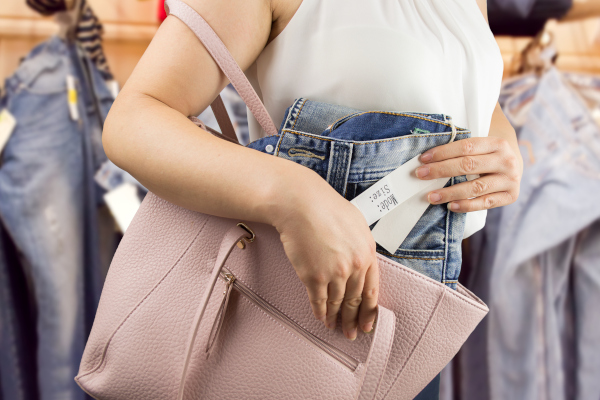Increases in Theft Add to Retail Supply Chain Challenges
Dollar Tree, Target among retailers that are taking new measures
Some of the nation’s largest retailers have cited shoplifting as a major concern going forward. From shoplifting of everyday items to large-scale heists orchestrated by organized crime, increases in stolen goods have become a major headache.
Besides the obvious dollars lost, increased retail theft can wreak havoc on an already stressed supply chain, leading to inaccurate stock levels and overall reduction of in-store inventory.
We are already seeing this in action at Dollar Tree, which earlier this year blamed a sudden decrease in gross profit margin from 32.7% in 2022 to 29.8% last quarter on “shrink.”
In response, Dollar Tree CEO Richard Dreiling and CFO Jeffrey Davis said they would be taking more “drastic measures” to reduce further inventory losses, including moving certain SKUs behind the checkout counter, and in some stores, discounting certain items that are repeatedly stolen from the shelf.
This is not only inconvenient for customers, but worrisome for a retail supply chain already fraught with added complexities and constant disruptions.
“Retailers need to submit more replenishment orders to make up for what was lost due to theft, adding more volatility to supply chains that still have not completely recovered from the pandemic,” said John Harmon, managing director of Technology Research for Coresight Research
What has changed?
Dollar General isn’t the only retailer placing retail theft front and center for poor performance. Target warned earlier this year it expected to lose half a billion dollars because of rising theft, reporting a rise in shoplifting and organized retail crime in its stores nationwide. In September, the retailer closed nine stores citing a high a level of theft and organized crime that it said had become a threat to the safety of its workers and customers.
“Shoplifting and in particular those acts that involve ORC (organized retail crime) has a much larger impact than just the loss of merchandise,” said David Johnston, NRF vice president of asset protection and retail operations, in a video interview. “Retailers continue to report an increase in violence occurring during shoplifting events, often associated with organized retail crime. These acts are occurring more openly, and thieves have become more brazen and aggressive in their efforts to steal merchandise.”
Unfortunately, supporting these claims is hard to quantify. While the NRF found that retail shrink, when taken as a percentage of total retail sales in 2021, accounted for $94.5 billion in losses, federal crime statistics from the FBI for grand larceny do not show an increase. NYPD statistics, for example, show decreases in both grand and petit larceny year-to-date.
According to Harmon, retail thefts can be hard to measure because they are likely underreported.
“One reason for the apparent disconnect could be that thefts below the felony threshold (generally about $1,000 per state) are not reported, and generally the police do not investigate misdemeanor cases,” he said, adding that “detaining a shoplifter is difficult and potentially dangerous for the associates and other customers.”
The pressures of the pandemic and rising e-commerce sales are one culprit for a rise in retail thefts, with a NRF consumer poll finding more than half (53%) of consumers believe retail crimes such as shoplifting and store looting have increased in their community since the onset of the pandemic.
“Many retailers, like Walmart and Target, have cited shoplifting as one of the main reasons for closing stores, and anecdotally a large number of retailers are talking about it,” said Harmon. “We have seen many videos in the media of gangs of thieves overrunning stores in addition to the inconvenience of goods being locked up in plexiglass cases. Retailers’ publicly discussing theft and taking measures that create friction for consumers are signs that the level of theft has become more serious.”
How to prevent retail thefts
There are many steps retailers can take to help prevent retail thefts, starting with implementing a computer vision system. These systems use artificial intelligence (AI) to act as a set of eyes on a store. They can detect suspicious behavior related to fraud and theft and act based on data collected. For example, by recognizing every product in the checkout area, these systems can detect customers at self-checkouts that don’t scan every product.
“Computer vision systems can detect loitering, shelf sweeps and threatening behavior, and other behaviors—for example shoplifters walk faster than legitimate shoppers,” said Harmon. “Store associates can receive alerts of customers to watch, and offering assistance sometimes makes thieves lose their nerve.”
Harmon also suggests locking up commonly stolen goods and installing physical impediments such as exit gates that do not open or shopping cart wheels that lock up if the shopper has not paid.
Lastly, Harmon said not to discount the power of simple employee presence. “Having associates on duty discourages shoplifting, and associates checking receipts on exit is also somewhat effective.”
Article Topics
Dollar Tree News & Resources
Increases in Theft Add to Retail Supply Chain ChallengesLatest in Warehouse|DC
European Parliament Passes New Law Requiring Supply Chain Accountability Talking Supply Chain: Understanding the FTC’s ban on noncompetes North Carolina Welcomes Amazon’s Newest Mega-Warehouse SAP Unveils New AI-Driven Supply Chain Innovations U.S. Manufacturing is Growing but Employment Not Keeping Pace Maximize Warehouse Space with Mezzanine Automation: Expert Tips Most Companies Unprepared For Supply Chain Emergency More Warehouse|DCAbout the Author











